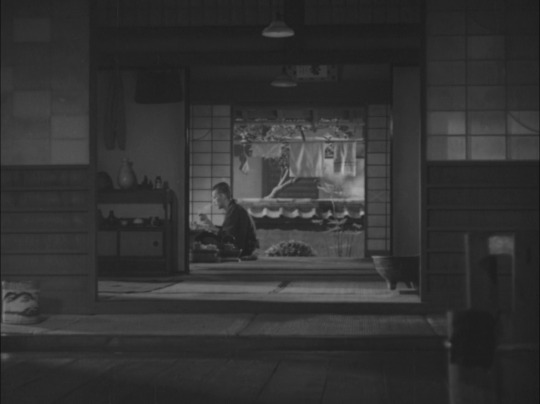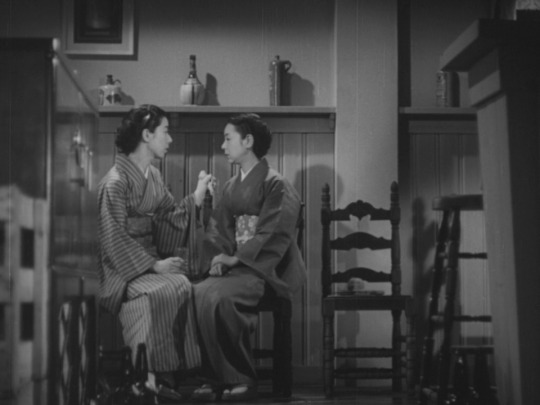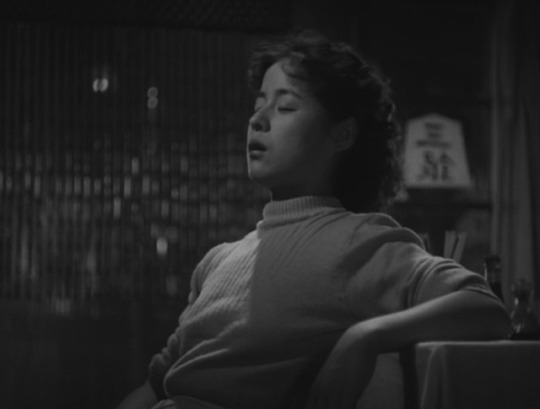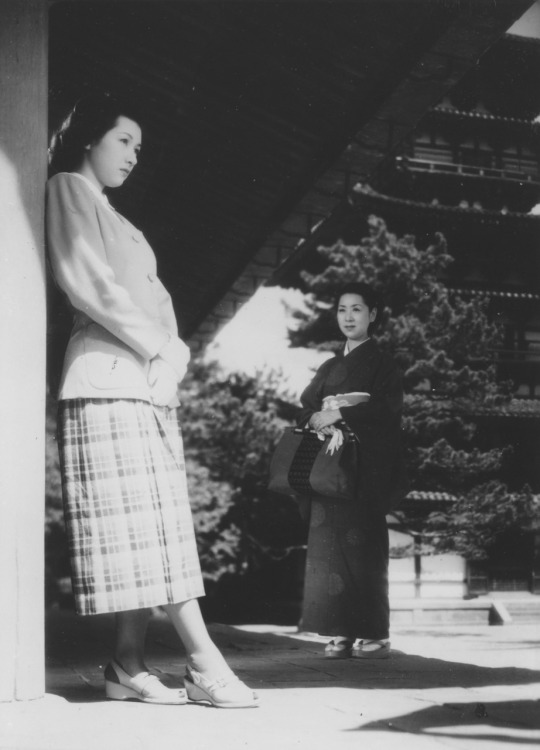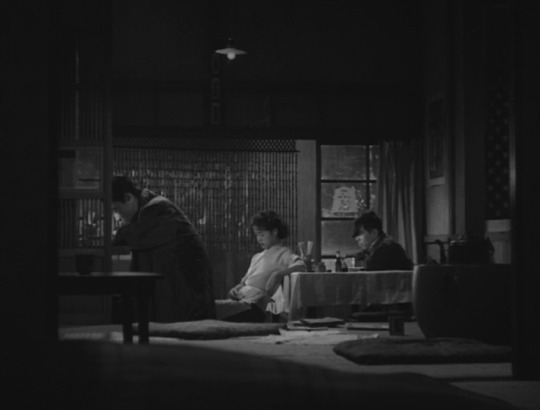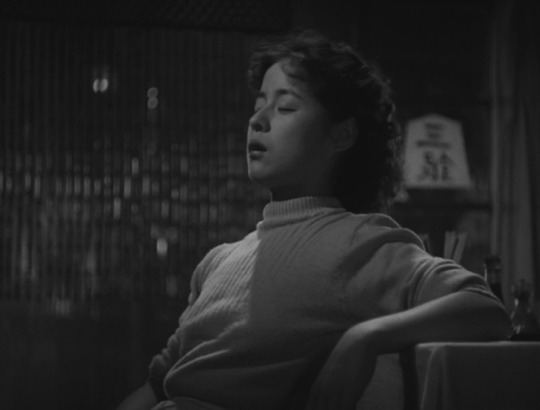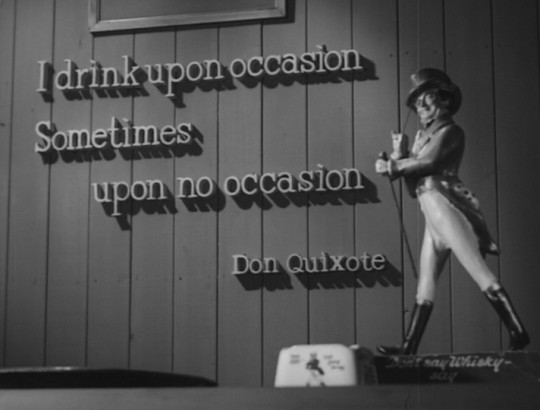#the munekata sisters
Text
Film Journal
"The Munekata Sisters" by Yasujirô Ozu

0 notes
Text

Kinuyo Tanaka and Hideko Takamine in The Munekata Sisters (Yasujiro Ozu, 1950)
Cast: Kinuyo Tanaka, Hideko Takamine, Ken Uehara, So Yamamura, Sanae Takasugi, Chishu Ryu, Yuji Hori, Tatsuo Saito. Screenplay: Kogo Noda, Yasujiro Ozu, based on a story by Jiro Osaragi. Cinematography: Joji Ohara. Production design: Seiya Kajima. Film editing: Toshiro Goto. Music: Ichiro Saito.
Some very non-Ozu things happen in Yasujiro Ozu's The Munekata Sisters. For example, the camera actually moves in one scene. Granted, it's only a brief pan across the setting at the end of the scene, but it was enough to startle anyone used to Ozu's locked-in low-angle points of view. But more unusually, there is actual physical violence in the film: A man slaps his wife repeatedly, and a few scenes later drops dead on the floor. The most contemplative of filmmakers, Ozu rarely deals directly with violence, preferring to show us the emotional consequences of disturbing events. The man, Ryosuke Mimura (So Yamamura), is unemployed. During his desultory search for a job, he is supported by his wife, Setsuko (Kinyuo Tanaka), who runs a small bar with the help of her much younger sister, Mariko (Hideko Takamine). The two sisters are very different: Setsuko, brought up before the war, is quiet and reserved and dresses in traditional Japanese style. Mariko reflects postwar attitudes in dress and manner: She's outspoken, with a spunky carefree manner, and sharply critical of her brother-in-law, whom she sees as an idler and a drunk. Then an old flame of Setsuko's, Hiroshi Tashiro (Ken Uehara), returns to town. Setsuko might have married him, but he decided to go to France before the war, so she married Mimura instead. Hiroshi is handsome and successful, and Mariko immediately sets her sights on reuniting him with her sister. Ozu develops all four characters with great finesse. Mimura is something of a dead-end case, and his outburst of jealous rage at Mimura's seeing Hiroshi again is frightening, but he has a softer side that he shows with the clowder of cats that he apparently fosters. There is something of the too-detached sophisticate about Mimura that shows in his scenes with Mariko, who falls in love with him while she's trying to reunite him with her sister. As a whole, The Munekata Sisters is more melodramatic than Ozu's films usually are, including the ending, which involves one of those renunciations that movies typically rely on as a plot resolution. But it's beautifully acted, especially by Tanaka and Takamine.
1 note
·
View note
Photo
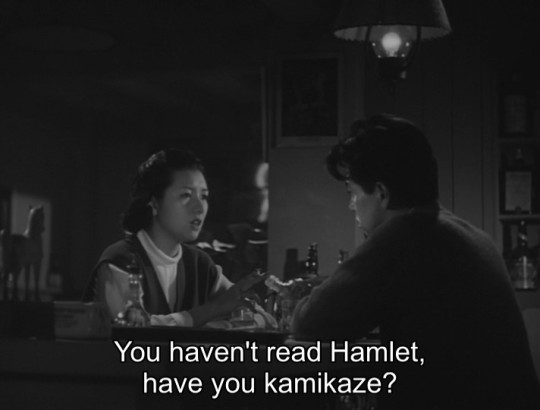


Munekata kyōdai (Ozu Yasujirō, 1950)
#munekata kyōdai#ozu yasujirō#yasujirō ozu#the munekata sisters#hamlet#William Shakespeare#1950#takamine hideko#hideko takamine#ozu#japanese cinema
119 notes
·
View notes
Photo
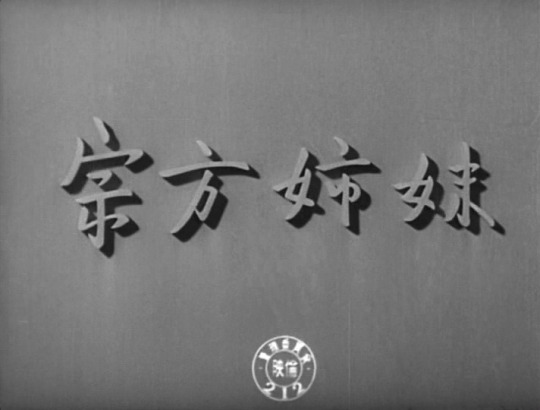
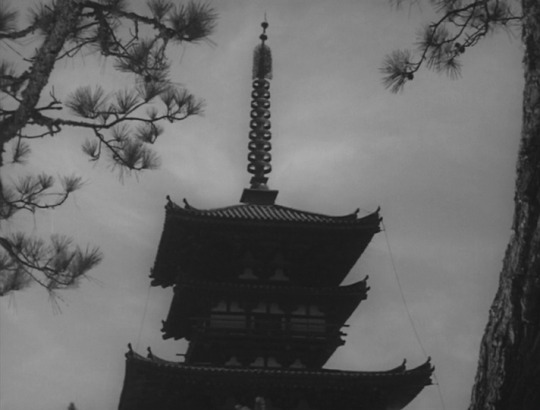
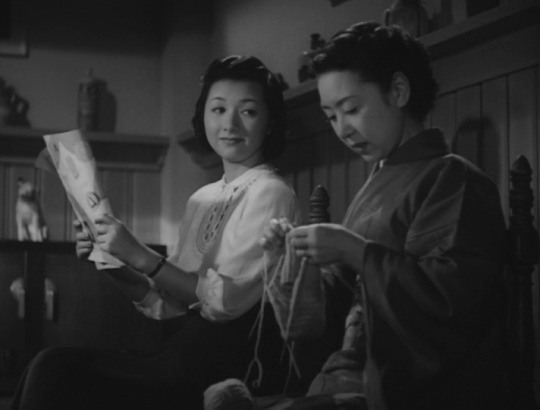
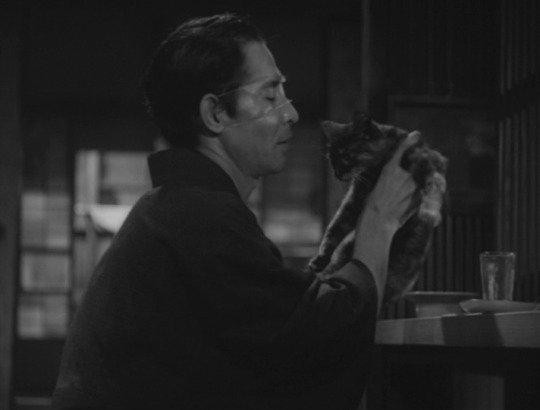
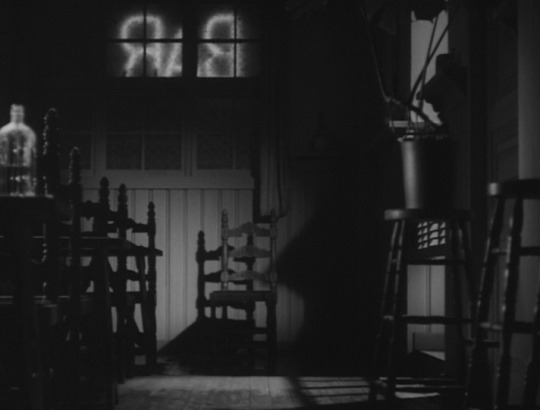



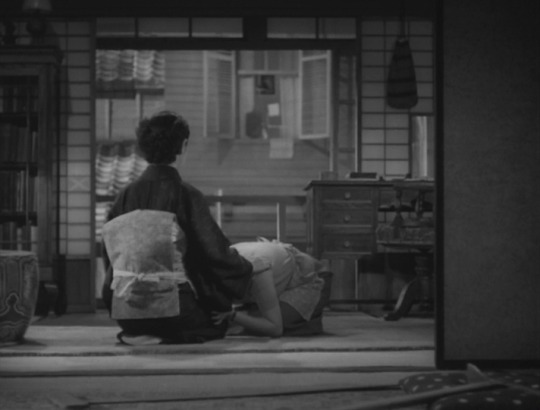
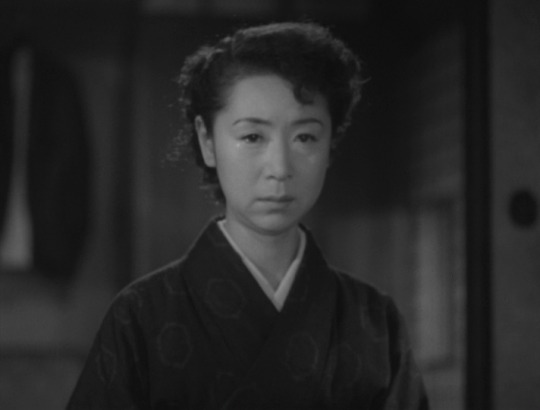
The Munekata Sisters / Munekata kyōdai (1950, Yasujirō Ozu)
宗方姉妹 (小津安二郎)
1/16/22
#The Munekata Sisters#Munekata Kyodai#Yasujiro Ozu#Hideko Takamine#Kinuyo Tanaka#Chishu Ryu#Ken Uehara#Sanae Takasugi#So Yamamura#Tatsuo Saito#Yuji Hori#drama#50s#Japanese#Japanese Golden Age#gendaigeki#sisters#terminal illness#marital problems#unemployment#domestic abuse#bars#misogyny#old flame#forbidden love#Kyoto
5 notes
·
View notes
Photo
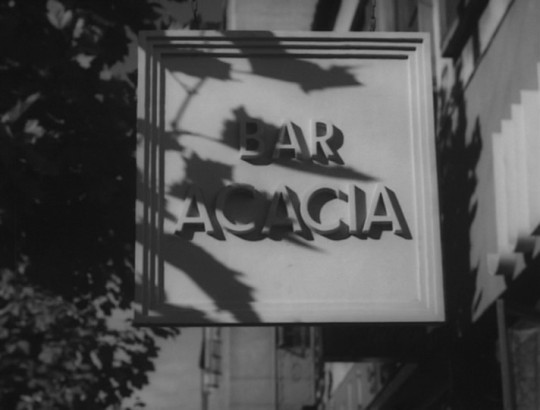
10 notes
·
View notes
Quote
私は古くならないことが新しいことだと思うのよ。ほんとに新しいことは、いつまでたっても古くならないことだと思ってんのよ【節子】
『宗方姉妹』小津安二郎
1 note
·
View note
Photo
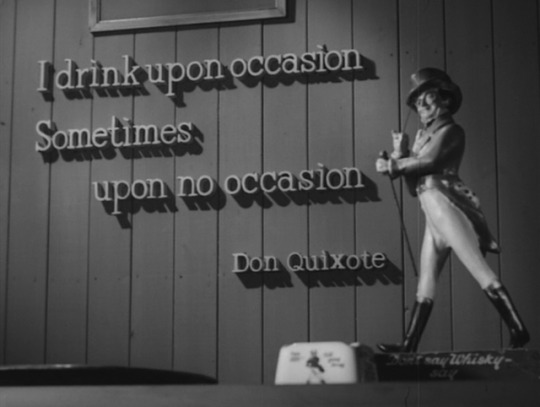
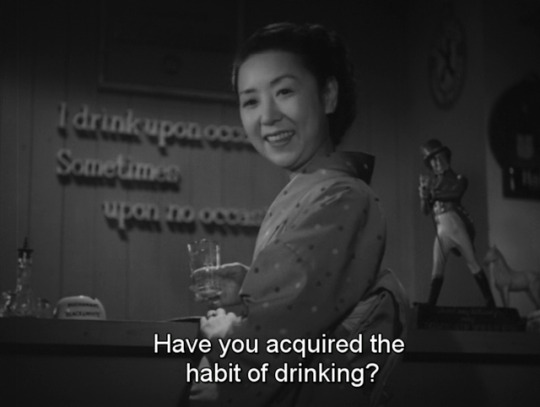
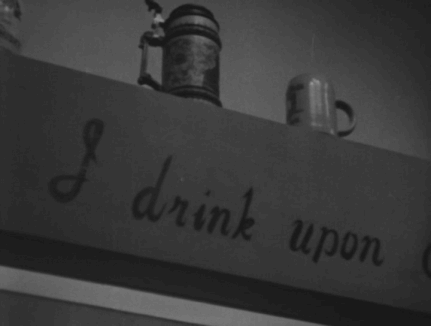
“I drink upon occasion, sometimes upon no occasion”.
The quote fron Don Quixote in two of Ozu’s bars.
What Did the Lady Forget (1937) and
The Munekata sisters (1950) Munekata kyodai
#What Did the Lady Forget#Shukujo wa nani o wasureta ka#Munekata kyodai#munekata sisters#Yasujirô Ozu#1937#1950#1930's_movies#1950s_movies#compare#Don_Quixote#Kinuyo Tanaka
4 notes
·
View notes
Text
The Munekata Sisters (宗方姉妹, Munekata Kyōdai, 1950) by Yasujirō Ozu

Another family melodrama of Yasujirō Ozu fascinates with a fantastic cast featuring Hideko Takamine and Kinuyo Tanaka, two famous leading ladies of Japanese classic cinema, along with the director’s frequent collaborators Chishu Ryu and So Yamamura. It is another solid addition to the collection of Ozu’s films about family relations, yet surprisingly the main conflicts seem to be obvious while depiction of several important characters is quite sketchy.
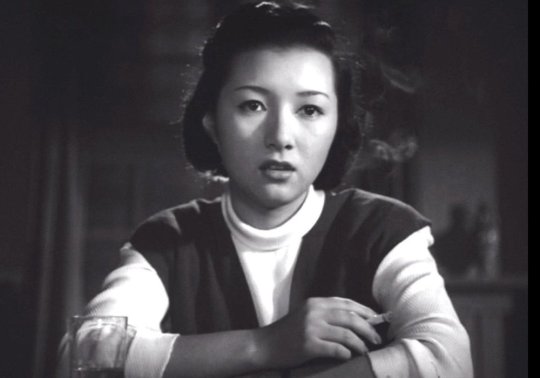
Set in the late 1940s, this films concerns the relationship between two sisters who represent pre-war and post-war Japan, old traditions and modern shift to the new social conduct. The plot also mentions the fatal illness of Munekata sisters’ father, yet his character rarely appears on the screen and these scenes are not so meaningful. Another important theme is the love triangle the sisters are involved into, as well as the troubled relations of Setsuko (Kinuyo Tanaka) and her husband Mimuro (So Yamamuro) who had developed a bad drinking habit and has no job. The character of Mimuro also seems to be very sketchy, his true feelings are poorly explained, perhaps based on Ozu’s idea of missing some important parts of the plot intentionally. Another sketchy character is Yoriko who is either a close friend or mistress of Hiroshi, a man both Setsuko and Mariko (Hideko Takamine) fall in love with. The character of Yoriko is perhaps instrumental in showing extreme and immature jealousy of Mariko. Yet I observed no other points depicting her on the screen.
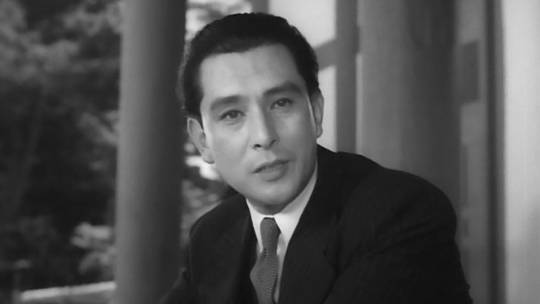
The drama is certainly not boring, and it isn’t a bad film. The duo of Tanaka and Takamine is enchanting, and they both really steal the show with their vivid and touching performance. Ozu shots the film from his favorite low angles, with tatami shots, and it is another traditionally slowly-paced piece of art that is very engaging. It’s always a pleasure to observe development of Ozu’s stories, his shots and actors’ work. However, the main conflicts are quite obvious, while some characters are a bit sketchy to understand them properly. The Munekata Sisters is worth watching, but it doesn’t stand any close to the finest films of the acclaimed Japanese master Yasujirō Ozu.
4 notes
·
View notes
Note
I've had the (now out of print) Mondo Macabre dvd of Born of Fire for years, but I really need to upgrade to that Blu. Are there any titles you're hoping to see get a Blu release in 2021?
Well there are a few personal fantasy releases I’d like, with the caveat that I have no idea about rights issues which might make release more or less possible, and of course I’m talking UK or at least UK friendly releases for my convenience!
I’ve said this before but I’d like the gaps in Criterion’s Bergman box set to get filled in so Prison, Music in Darkness, and a Fanny & Alexander/Scenes From a Marriage stylee release for Face to Face. There are a bunch of Fassbinder titles which could do with an upgrade to Blu. I read the RWF Foundation were working on restoring Wildwechsel so there’s hope for that, and there are a couple of Ozus not released on Blu here in the UK like Tokyo Twilight and The Munekata Sisters.
I’d love a Maurice Pialat box set although that seems unlikely, and I’ve been eyeing up a Swedish DVD set of Mai Zetterling’s films so a Blu of that would be a dream, although I suspect unlikely again, and delving into the most niche of my niche obsessions I’d like a BFI Flipside release of Norman Wisdom’s so-bad-it’s-bad What's Good for the Goose which includes the “continental” version!
9 notes
·
View notes
Text
St Icarus 40.5 profile
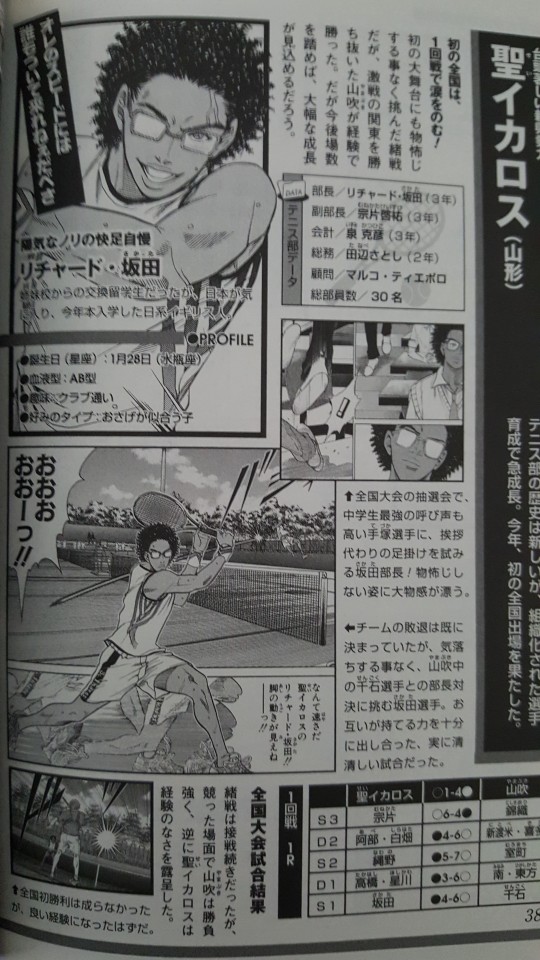
St Icarus (Yamagata)
Appearance of an remarkable emerging force.
The tennis club’s history is rather short, but the players who’ve been organised are growing rapidly from the training. This year, they achieved their first participation in the national tournament.
Choking back tears at first round of their first national tournament!
Even at their first time on the big stage they went for the first battle without cowardice, but Yamabuki - having went through Kantou’s fierce battles - won with experience. But from on, if they gain more experience, substantial growth can be expected.
Tennis club data
Captain: Richard Sakata (3rd year)
Vice-captain: Munekata Keisuke (3rd year)
Treasurer: Izumi Katsuhiko (3rd year)
General affairs (manager): Tanabe Satoshi (2nd year)
Advisor: Marco Tiepolo
Club membership: 30 people
“No one can catch up with my speed!” *1
Lively and proud of being nimble-footed, *2
Richard Sakata
British of Japanese descent, he came as an exchange student from a sister school, but liked Japan and officially entered the school this year.
Profile
Birthday (sign): February 28th (Aquarius)
Blood-type: AB
Hobby: clubbing
Preferred type: someone who can drink
At the national tournament raffle, instead of offering greetings the captain Sakata tried tripping Tezuka, the player hailed as the strongest within middle school tennis. *3 There’s an impression of a big-shot in that fearlessness.
Even though the team’s elimination is already decided, Sakata faced Yamabuki’s Sengoku in a confrontation of captains without losing his ease. *4 Both of them brought forth their strength, and indeed it became a refreshing match.
National tournament match results
Round 1: St Icarus vs Yamabuki 1-4
S3 Munekata vs Nishikiori 6-4
D2 Abe-Shirahata vs Nitobe-Kita 4-6
S2 Nawano vs Muromachi 5-7
D1 Takahashi-Hoshikawa vs Minami-Higashikata 3-6
S1 Sakata vs Sengoku 4-6
Though these first matches were close, Yamabuki is strong in competitive settings, while St Icarus showed their lack of experience.
Even though they couldn’t reach a first win in the nationals, it likely became a good experience.
TN:
Scans provided by @dimensionaltennis - thank you!
This one had some tricky sentences, so a bit of guessing was involved. Please offer any corrections if you find mistakes!
*1 Not sure if the last syllables of the line are supposed to mean something or if he uses some nonsensical additions like some characters do.
*2 This was one of the tricky parts, so don’t judge him too much for it.
*3 Somewhat unsure about Tezuka’s description.
*4 Seems weird they would call it “buchou taiketsu” since Sengoku is not one, but that’s what it says.
#my translation#prince of tennis#st icarus#richard sakata#tezuka kunimitsu#yamabuki#sengoku kiyosumi
7 notes
·
View notes
Photo

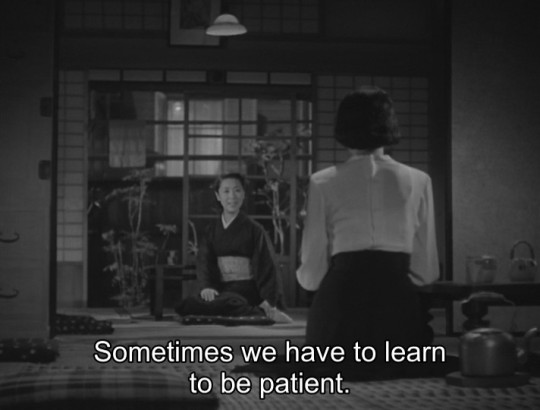


Munekata kyōdai (Ozu Yasujirō, 1950)
#munekata kyōdai#the munekata sisters#ozu yasujirō#yasujirō ozu#tanaka kinuyo#kinuyo tanaka#takamine hideko#hideko takamine#japanese cinema#1950#marriage#小津安二郎
35 notes
·
View notes
Text
The Best of January 2022

Best Discovery: Mass
Runners Up: Drive My Car, Medea, The Munekata Sisters, Passing, Somewhere Beneath the Wide Sky
Best Rewatch: Secret Beyond the Door
Runners Up: The Dead Zone, Dreams
Most Enjoyable Fluff: The Scarlet Letter
Runners Up: Dial M for Murder, Don't Look Up, A Frosty Affair, King Richard, Kiss Me, Kill Me, The Long Journey Home, Matching Hearts, Out of Order, The Phantom of the Opera, A Valentine's Match
Best Male Performance: Christopher Walken in The Dead Zone
Runners Up: Reed Birney and Jason Isaacs in Mass, Paul Muni in I Am a Fugitive from a Chain Gang, Nick Nolte in Q&A, Michael Redgrave in Secret Beyond the Door, Keifer Sutherland in Promised Land
Best Female Performance: Martha Plimpton in Mass
Runners Up: Joan Bennett in Secret Beyond the Door, Bette Davis and Gena Rowlands in Strangers: The Story of a Mother and Daughter, Ann Dowd in Mass, Glenda Jackson in Hedda, Ruth Negga and Tessa Thompson in Passing, Hideko Takamine and Kinuyo Tanaka in The Munekata Sisters
Best Supporting Performance or Cameo: Akira Ishihama in Somewhere Beneath the Wide Sky
Runners Up: Armand Assante and Paul Calderon in Q&A, Gunnar Björnstrand in Dreams, Oscar Rowland in Promised Land, Timothy West in Hedda
Most Enjoyable Ham: Demi Moore in The Scarlet Letter
Runners Up: Gerard Butler in The Phantom of the Opera, Van Hansis in Kiss Me, Kill Me, Susan Hayward in With a Song in My Heart, Luke Macfarlane in A Valentine's Match, Niall Matter in Aurora Teagarden Mysteries: Heist and Seek, Sharon Stone in Where Sleeping Dogs Lie, Ann Wedgeworth in Citizens Band
Best Mise-en-scène: Secret Beyond the Door
Runners Up: The Dead Zone, Dreams, Drive My Car, Medea, The Munekata Sisters, On the Comet, Passing, She Was Like a Wild Chrysanthemum, The Tragedy of Macbeth
Best Locations: The French Lieutenant's Woman (lush seaside grove in Dorset's Undercliff)
Runners Up: Drive My Car (various Hiroshima and Hokkaido locations), Medea (misty wetlands, grassy fields), Somewhere Beneath the Wide Sky (waterfront industrial park, mountain village), Swan Song (dreamy small town Ohio locations)
Best Score: The Dead Zone (Michael Kamen)
Runners Up: Drive My Car (Eiko Ishibashi), Medea (Joachim Holbek), The Mercenary (Ennio Morricone), Passing (Devonté Hynes), Secret Beyond the Door (Miklós Rózsa)
Best Cartoon: I Heard
Runners Up: Broken Toys, I Like Mountain Music, Pioneer Days
Best Leading Hunk: Shawn Roberts in A Frosty Affair
Runners Up: Scott Eastwood in Dangerous, Götz George in Out of Order, Niall Matter in Aurora Teagarden Mysteries: Heist and Seek, Dyland McDermott in Where Sleeping Dogs Lie, Franco Nero in The Mercenary
Best Supporting Hunk: Guinn 'Big Boy' Williams in You Only Live Once
Runners Up: Bertie Carvel in The Tragedy of Macbeth, Danny Deferrari in Shiva Baby, John Goodman in Everybody's All-American, George Reeves in The Blue Gardenia, Ryan Robbins in Dangerous
Assorted Pleasures:
- Flamboyant goth-opera music video aesthetic in The Phantom of the Opera
- Running dinosaurs, celestial vistas in On the Comet
2 notes
·
View notes

